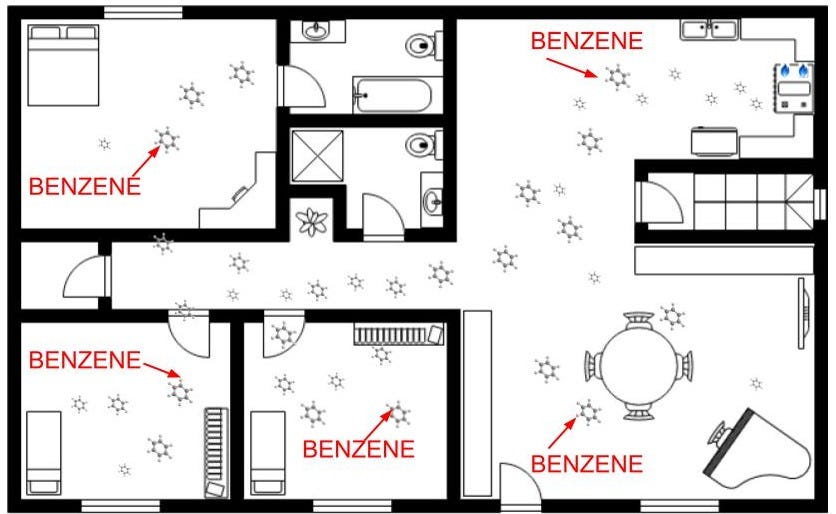Last Updated on: 12th June 2025, 12:27 am
There are many dangerous pollutants emitted when we burn gas in our homes. Nitrogen oxides (NOx), carbon monoxide, and formaldehyde are some of the worst culprits and we’ll do deep dives on each of these in a series of articles this year.
But in 2023, a landmark research study published in Environmental Science and Technology also revealed the risks of another harmful chemical emitted during indoor natural gas combustion: Benzene (C₆H₆). Benzene is listed as a known carcinogen by the International Agency for Research on Cancer (IARC) and the US Environmental Protection Agency (EPA). Its presence in gas stove emissions draws a striking parallel to cigarette smoke, which is also a source of unhealthy levels of benzene.
The researchers from the 2023 study sampled air in homes across California and Colorado, comparing environments with gas stoves to those with electric alternatives. They found that gas stoves emitted benzene levels that often surpassed those found in secondhand smoke. They also noted emitted benzene can linger throughout the home for extended periods, even hours after the stove is turned off. In contrast, induction stoves produced no detectable benzene, and benzene from electric coil stoves were found to be minimal.
Recent research developments also substantiate the dangers of gas use within the home. A new Stanford University study (2025) published in the Journal of Hazardous Materials found that children exposed to benzene from natural gas stoves in poorly ventilated homes face nearly double the lifetime cancer risk compared to adults.
Researchers from this study modeled how benzene spreads indoors when using gas stoves, presenting a danger even outside of the kitchen. They showed it accumulates most in small or poorly ventilated homes, spreading from kitchens to bedrooms and other living spaces.

To address this, the authors recommend evidence-based strategies to reduce benzene exposure. These include switching gas stoves to cleaner electric or induction stoves, opening all windows in the home for adequate ventilation during cooking, and using an outdoor-venting kitchen hood with high capture efficiency.
These two studies show the striking similarity between the risks of cooking with gas and the risks of secondhand smoke. Both smoking and burning emit substantial quantities of benzene in the home, which can lead to cancer. Though these research studies focused primarily on gas stoves and their associated health risk, it remains to be seen whether other natural gas appliances pose similar risks. There is concern that emissions from gas furnaces and gas water heaters could present health dangers as well, especially in poorly vented environments.
Join us for a webinar devoted to this topic as part of Clean Air Week on September 22, 2025.
This article was written by Wesley Allen and Joe Wachunas.

Sign up for CleanTechnica’s Weekly Substack for Zach and Scott’s in-depth analyses and high level summaries, sign up for our daily newsletter, and follow us on Google News!
 Whether you have solar power or not, please complete our latest solar power survey.
Whether you have solar power or not, please complete our latest solar power survey.
Have a tip for CleanTechnica? Want to advertise? Want to suggest a guest for our CleanTech Talk podcast? Contact us here.
Sign up for our daily newsletter for 15 new cleantech stories a day. Or sign up for our weekly one on top stories of the week if daily is too frequent.
CleanTechnica uses affiliate links. See our policy here.
CleanTechnica’s Comment Policy






